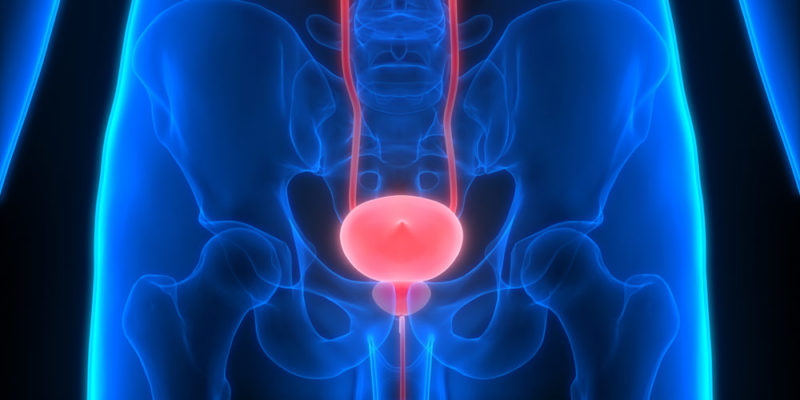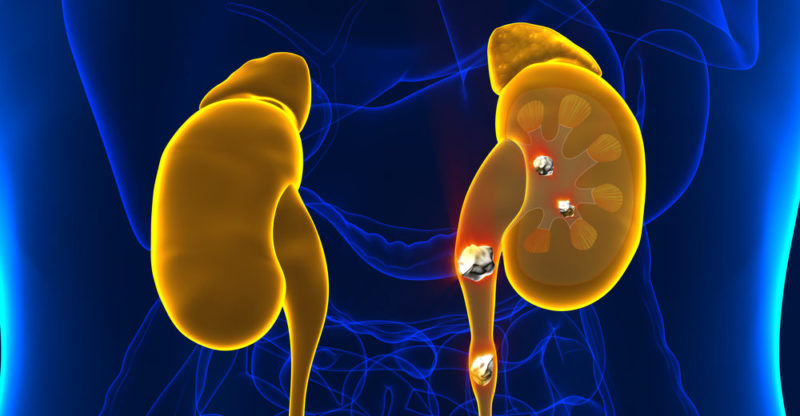We explain what the excretory system is, the parts that compose it and their functions. Also, what are its characteristics and diseases.
What is the excretory system?
The excretory system or excretory system is known as the set of organs and ducts of the body responsible for the elimination of nitrogenous waste from the body, whose accumulation in it constitutes an important risk to health and that mainly constitute urea (CON2H4), the creatinine (C4H7N3O) and uric acid (C5H4N4O3), both expelled from the body through urine.For this, this system is made up of organs that filter the blood and remove unwanted substances from it , and then a series of conduits that lead them out of the body .
This circuit is integrated into the cardiovascular system and allows the routine purification of the blood that will be oxygenated in the lungs and then sent to the entire body.
Failures of the excretory system are often evidence of serious complications and are a major cause of death in humans .
Parts of the excretory system
 The excretory system is fundamentally composed of two stages:
The excretory system is fundamentally composed of two stages:
- Filtering organs. The kidneys responsible for filtering and generating urine and the excretory pathway that receives urine to be expelled.
- Ejection ducts. The excretory bladder where urine is stored, the ureters where it is expelled and the urethra or urination hole where it leaves the body.
Functions of the excretory system
As has been said, the essential role of the excretory system is the filtering of residual nitrogenous substances from the metabolism , to allow the blood to complete its cycle as free of harmful impurities as possible.That is why this system is so vital: the accumulation of these substances in the blood leads to a form of lethal intoxication.
The kidneys
 The most important organs of the urinary system are the kidneys, which are two organs arranged symmetrically around the spine , at the level of the belly and weighing about 140 grams.
The most important organs of the urinary system are the kidneys, which are two organs arranged symmetrically around the spine , at the level of the belly and weighing about 140 grams.They are filtering structures irrigated by the renal vein , where metabolic waste is housed and the fluid that will contain it, urine, is produced.
Apart from this, the kidneys perform essential metabolic functions, such as the secretion of hormones in the adrenal glands , located at the top of each kidney.
These organs are divided into three regions: cortex, medulla, and pelvis. And they are surrounded by a fine tissue capsule that protects and insulates them.
Stages of urine formation
The composition of urine is given as follows:
- Filtration. Certain kidney structures called glomeruli filter the nitrogen content of the blood, preventing the passage of cells and larger substances, like a sieve. Approximately 180 liters of blood are filtered through them every 24 hours (in both kidneys).
- Reabsorption Many of the filtered components return to the blood before urine forms. Thus it is possible to recover water , salts , sugars and dissolved amino acids, which are reusable and whose elimination would result in greater metabolic waste.
- Secretion. Urine is then formed in the glomeruli, is carried through the renal pelvis through the ureter to the bladder and is stored there. Once 250 to 500 ml of urine have been collected, certain contractions and relaxations of the sphincter begin that produce the urination reflex. Then the urine is released through the urethra and is expelled from the body.
Control of urination
 Despite the fact that urination is reflex, it can be suppressed for a time voluntarily and consciously . This is learned by humans during their toilet training stage.
Despite the fact that urination is reflex, it can be suppressed for a time voluntarily and consciously . This is learned by humans during their toilet training stage.Excessive retention of urine, however, leads to painful and exasperating sensations that will eventually escape the control of consciousness.
Urine constitution
It is a watery, yellowish liquid, with a characteristic odor (due to its nitrogen-rich composition) and semi-transparent. Normally a human being secretes and exploits 1.4 liters of urine, whose content is 95% water, 2% inorganic salts, 3% urea and uric acid. There may also be waste toxins and, in the case of infections, white blood cells and even bacteria or viruses .The content of the urine is often analyzed to understand the metabolic functioning of the body.
Ureters

This is the name given to the tubes 21 to 30 cm long and about 3 to 4 millimeters in diameter , which conduct urine into the bladder.
There they end in the ureteral meatus , a valve-shaped structure that allows the fluid to pass out but does not allow it to return through the duct, keeping the kidneys as free as possible from urine.
Urethra
This is the name of the tube that carries urine from the bladder out of the body, and it is different according to the male or female gender:
- In the woman. It is a simple canal, 3 or 4 cm long, almost vertical and passes in front of the vagina, where it culminates in the vulva above the entrance to the vagina.
- In the man. It measures 18 to 20 cm in length and is irregular, with wide and thin shapes, passing in front of the prostate, the corpus spongiosum and culminating in a sphincter. This last path fulfills not only the excretory function of expulsion of urine, but also of emission of semen during reproduction .
Diseases of the excretory system

There are complications and pathologies of the excretory system, which are usually attended to carefully, given its vital importance for the body. Some are:
- Cystitis. This is the name given to chronic or acute infection and inflammation of the urinary bladder or nearby ducts. It is a common disease, the recurrence of which can put higher structures at risk.
- Renal calculus. Since blood salts are filtered in the kidneys, excess or poor assimilation of calcium and other salts can lead to their crystallization inside the kidney, thus forming grit or, worse, stones that must be painfully expelled by the urinary duct.
- Renal insufficiency. The failure of the kidney function that leads to poor or irregular filtering, and which can be the product of congenital elements or acquired diseases, or exposure to violent toxins. There is acute (sudden) or severe (chronic) kidney failure.
Other forms of excretion
There are other ways the body excretes harmful substances, which do not involve the excretory system, such as:
- Sweating A transparent and saline substance is emitted through the sweat glands that not only moisturizes and refreshes the skin , but also serves to dispose of toxic substances and eliminate residues from internal dynamics.
- The expectoration. During respiratory tract infections, it is common to cough up phlegm, a dense, whitish, yellowish or greenish substance that contains white blood cells and other waste substances as a way to fight the infection.
- The liver. The liver is another blood filter that does not lead to the excretory system, but where the excess hemoglobin is processed, released by old red blood cells when they die in the spleen. Thus, two pigments are formed: bilirubin and biliverdin, which constitute bile, disposed of along with other fats and waste substances during defecation.
MA student of the TransAtlantic Masters program at UNC-Chapel Hill. Political Science with a focus on European Studies. Expressed ideas are open to revision. He not only covers Technical articles but also has skills in the fields of SEO, graphics, web development and coding. .
Leave a reply
Your email address will not be published. Required fields are marked *Recent post

Sport: What Is It, Types, Risks, Features, Characteristics and Examples

Dogs: Emergence, Features, Characteristics, Feeding and Breeds

Story: Definition, Elements, Structure, Features and Characteristics

